Dani Yogatama
The Semantic Hub Hypothesis: Language Models Share Semantic Representations Across Languages and Modalities
Nov 07, 2024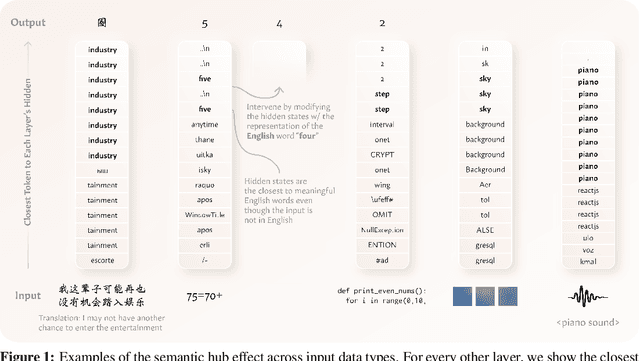
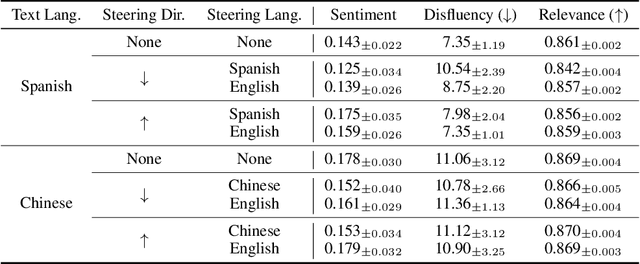
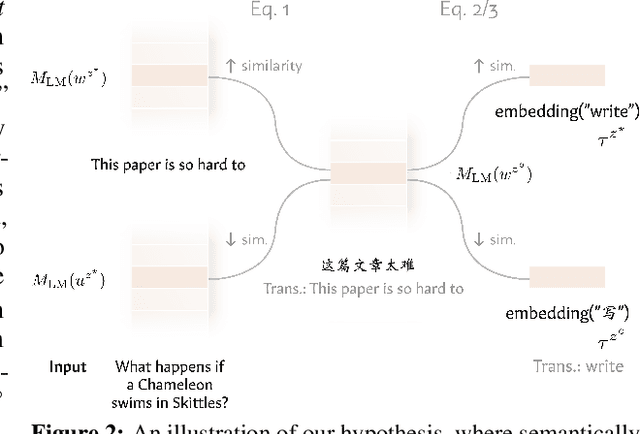
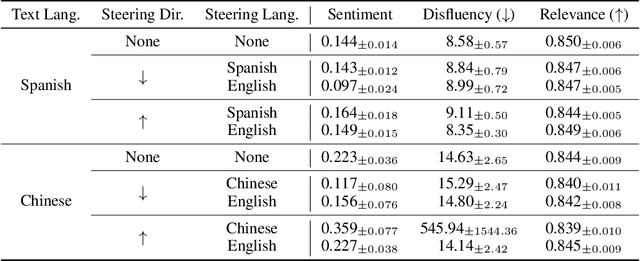
Abstract:Modern language models can process inputs across diverse languages and modalities. We hypothesize that models acquire this capability through learning a shared representation space across heterogeneous data types (e.g., different languages and modalities), which places semantically similar inputs near one another, even if they are from different modalities/languages. We term this the semantic hub hypothesis, following the hub-and-spoke model from neuroscience (Patterson et al., 2007) which posits that semantic knowledge in the human brain is organized through a transmodal semantic "hub" which integrates information from various modality-specific "spokes" regions. We first show that model representations for semantically equivalent inputs in different languages are similar in the intermediate layers, and that this space can be interpreted using the model's dominant pretraining language via the logit lens. This tendency extends to other data types, including arithmetic expressions, code, and visual/audio inputs. Interventions in the shared representation space in one data type also predictably affect model outputs in other data types, suggesting that this shared representations space is not simply a vestigial byproduct of large-scale training on broad data, but something that is actively utilized by the model during input processing.
Causal Interventions on Causal Paths: Mapping GPT-2's Reasoning From Syntax to Semantics
Oct 28, 2024Abstract:While interpretability research has shed light on some internal algorithms utilized by transformer-based LLMs, reasoning in natural language, with its deep contextuality and ambiguity, defies easy categorization. As a result, formulating clear and motivating questions for circuit analysis that rely on well-defined in-domain and out-of-domain examples required for causal interventions is challenging. Although significant work has investigated circuits for specific tasks, such as indirect object identification (IOI), deciphering natural language reasoning through circuits remains difficult due to its inherent complexity. In this work, we take initial steps to characterize causal reasoning in LLMs by analyzing clear-cut cause-and-effect sentences like "I opened an umbrella because it started raining," where causal interventions may be possible through carefully crafted scenarios using GPT-2 small. Our findings indicate that causal syntax is localized within the first 2-3 layers, while certain heads in later layers exhibit heightened sensitivity to nonsensical variations of causal sentences. This suggests that models may infer reasoning by (1) detecting syntactic cues and (2) isolating distinct heads in the final layers that focus on semantic relationships.
Vibe-Eval: A hard evaluation suite for measuring progress of multimodal language models
May 03, 2024
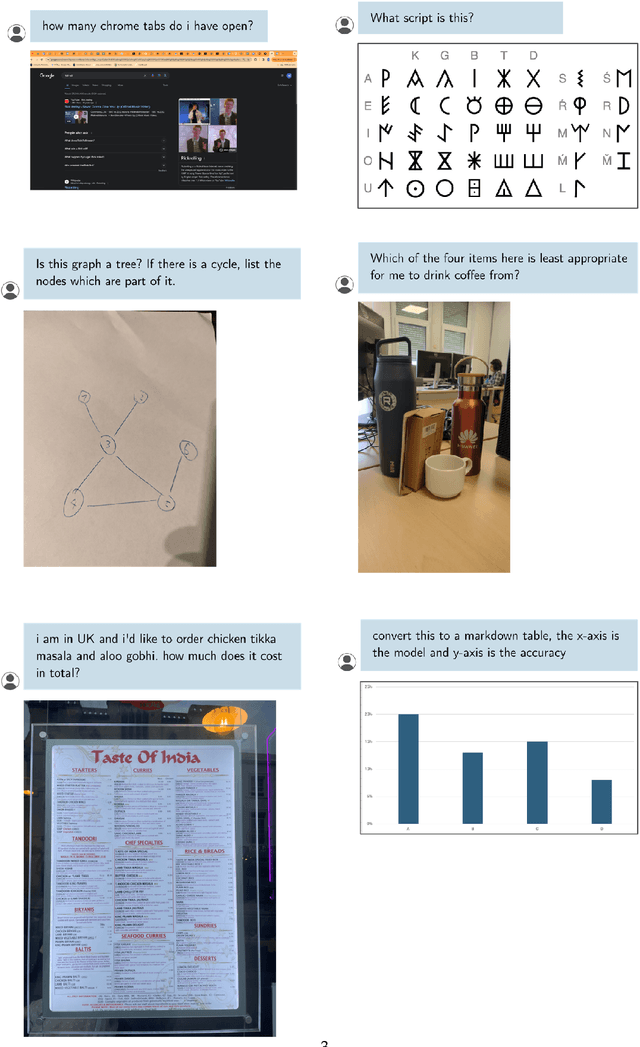
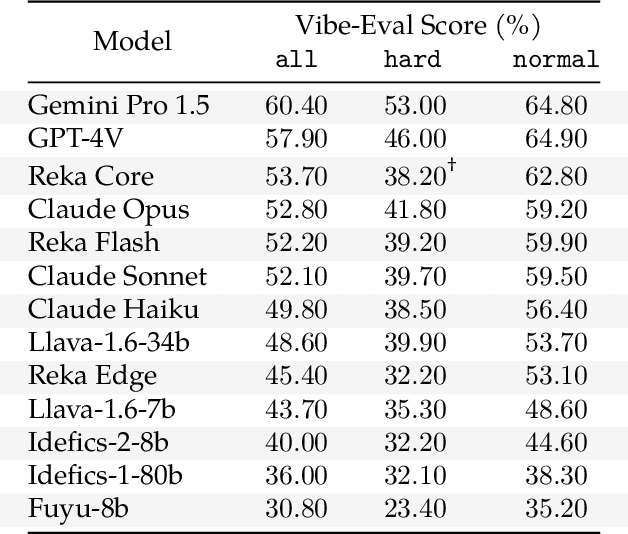
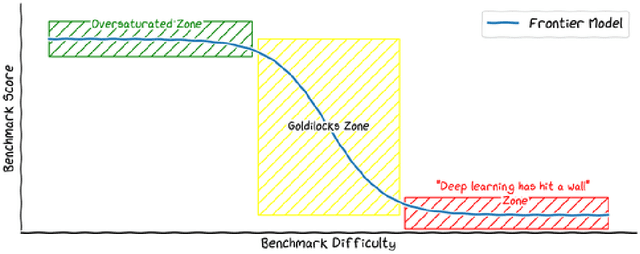
Abstract:We introduce Vibe-Eval: a new open benchmark and framework for evaluating multimodal chat models. Vibe-Eval consists of 269 visual understanding prompts, including 100 of hard difficulty, complete with gold-standard responses authored by experts. Vibe-Eval is open-ended and challenging with dual objectives: (i) vibe checking multimodal chat models for day-to-day tasks and (ii) rigorously testing and probing the capabilities of present frontier models. Notably, our hard set contains >50% questions that all frontier models answer incorrectly. We explore the nuances of designing, evaluating, and ranking models on ultra challenging prompts. We also discuss trade-offs between human and automatic evaluation, and show that automatic model evaluation using Reka Core roughly correlates to human judgment. We offer free API access for the purpose of lightweight evaluation and plan to conduct formal human evaluations for public models that perform well on the Vibe-Eval's automatic scores. We release the evaluation code and data, see https://github.com/reka-ai/reka-vibe-eval
Reka Core, Flash, and Edge: A Series of Powerful Multimodal Language Models
Apr 18, 2024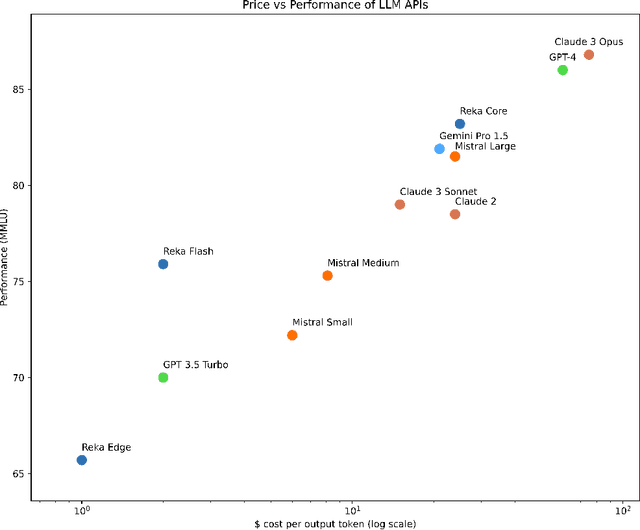


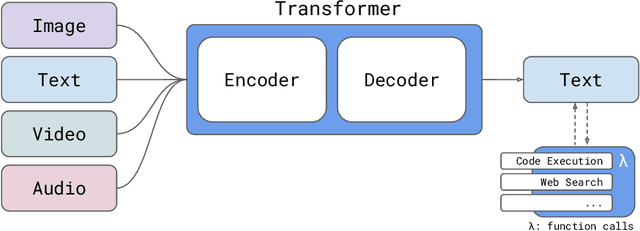
Abstract:We introduce Reka Core, Flash, and Edge, a series of powerful multimodal language models trained from scratch by Reka. Reka models are able to process and reason with text, images, video, and audio inputs. This technical report discusses details of training some of these models and provides comprehensive evaluation results. We show that Reka Edge and Reka Flash are not only state-of-the-art but also outperform many much larger models, delivering outsized values for their respective compute class. Meanwhile, our most capable and largest model, Reka Core, approaches the best frontier models on both automatic evaluations and blind human evaluations. On image question answering benchmarks (e.g. MMMU, VQAv2), Core performs competitively to GPT4-V. Meanwhile, on multimodal chat, Core ranks as the second most preferred model under a blind third-party human evaluation setup, outperforming other models such as Claude 3 Opus. On text benchmarks, Core not only performs competitively to other frontier models on a set of well-established benchmarks (e.g. MMLU, GSM8K) but also outperforms GPT4-0613 on human evaluation. On video question answering (Perception-Test), Core outperforms Gemini Ultra. Models are shipped in production at http://chat.reka.ai . A showcase of non cherry picked qualitative examples can also be found at http://showcase.reka.ai .
IsoBench: Benchmarking Multimodal Foundation Models on Isomorphic Representations
Apr 02, 2024
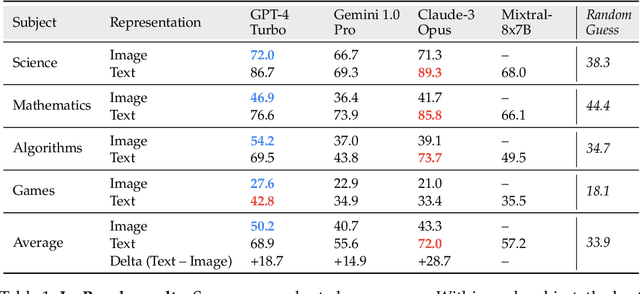
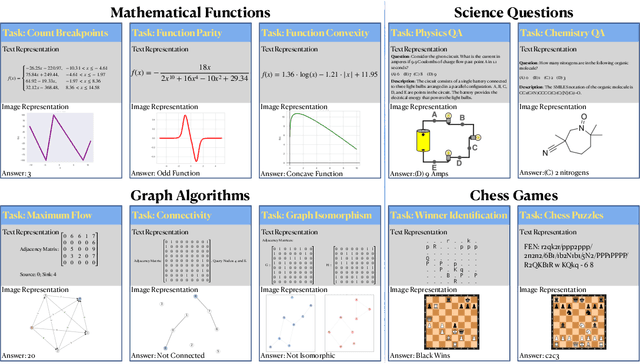
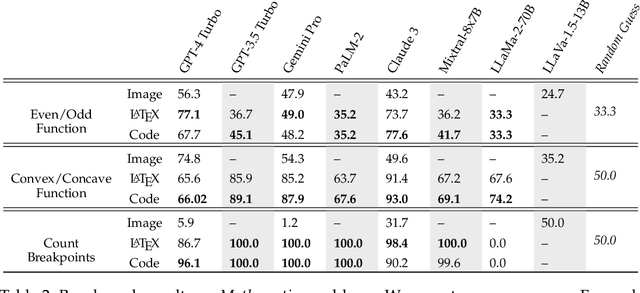
Abstract:Current foundation models exhibit impressive capabilities when prompted either with text only or with both image and text inputs. But do their capabilities change depending on the input modality? In this work, we propose $\textbf{IsoBench}$, a benchmark dataset containing problems from four major areas: math, science, algorithms, and games. Each example is presented with multiple $\textbf{isomorphic representations}$ of inputs, such as visual, textual, and mathematical presentations. IsoBench provides fine-grained feedback to diagnose performance gaps caused by the form of the representation. Across various foundation models, we observe that on the same problem, models have a consistent preference towards textual representations. Most prominently, when evaluated on all IsoBench problems, Claude-3 Opus performs 28.7 points worse when provided with images instead of text; similarly, GPT-4 Turbo is 18.7 points worse and Gemini Pro is 14.9 points worse. Finally, we present two prompting techniques, $\textit{IsoCombination}$ and $\textit{IsoScratchPad}$, which improve model performance by considering combinations of, and translations between, different input representations.
Understanding In-Context Learning with a Pelican Soup Framework
Feb 16, 2024Abstract:Many existing theoretical analyses of in-context learning for natural language processing are based on latent variable models that leaves gaps between theory and practice. We aim to close these gaps by proposing a theoretical framework, the Pelican Soup Framework. In this framework, we introduce (1) the notion of a common sense knowledge base, (2) a general formalism for natural language classification tasks, and the notion of (3) meaning association. Under this framework, we can establish a $\mathcal{O}(1/T)$ loss bound for in-context learning, where $T$ is the number of example-label pairs in the demonstration. Compared with previous works, our bound reflects the effect of the choice of verbalizers and the effect of instruction tuning. An additional notion of \textit{atom concepts} makes our framework possible to explain the generalization to tasks unseen in the language model training data. Finally, we propose a toy setup, Calcutec, and a digit addition task that mimics types of distribution shifts a model needs to overcome to perform in-context learning. We also experiment with GPT2-Large on real-world NLP tasks. Our empirical results demonstrate the efficacy of our framework to explain in-context learning.
DeLLMa: A Framework for Decision Making Under Uncertainty with Large Language Models
Feb 04, 2024Abstract:Large language models (LLMs) are increasingly used across society, including in domains like business, engineering, and medicine. These fields often grapple with decision-making under uncertainty, a critical yet challenging task. In this paper, we show that directly prompting LLMs on these types of decision-making problems yields poor results, especially as the problem complexity increases. To overcome this limitation, we propose DeLLMa (Decision-making Large Language Model assistant), a framework designed to enhance decision-making accuracy in uncertain environments. DeLLMa involves a multi-step scaffolding procedure, drawing upon principles from decision theory and utility theory, to provide an optimal and human-auditable decision-making process. We validate our framework on decision-making environments involving real agriculture and finance data. Our results show that DeLLMa can significantly improve LLM decision-making performance, achieving up to a 40% increase in accuracy over competing methods.
On Retrieval Augmentation and the Limitations of Language Model Training
Nov 16, 2023Abstract:Augmenting a language model (LM) with $k$-nearest neighbors (kNN) retrieval on its training data alone can decrease its perplexity, though the underlying reasons for this remains elusive. In this work, we first rule out one previously posited possibility -- the "softmax bottleneck." We further identify the MLP hurdle phenomenon, where the final MLP layer in LMs may impede LM optimization early on. We explore memorization and generalization in language models with two new datasets, where advanced model like GPT-3.5-turbo find generalizing to irrelevant information in the training data challenging. However, incorporating kNN retrieval to vanilla GPT-2 117M can consistently improve performance in this setting.
The Distributional Hypothesis Does Not Fully Explain the Benefits of Masked Language Model Pretraining
Oct 25, 2023Abstract:We analyze the masked language modeling pretraining objective function from the perspective of the distributional hypothesis. We investigate whether better sample efficiency and the better generalization capability of models pretrained with masked language modeling can be attributed to the semantic similarity encoded in the pretraining data's distributional property. Via a synthetic dataset, our analysis suggests that distributional property indeed leads to the better sample efficiency of pretrained masked language models, but does not fully explain the generalization capability. We also conduct analyses over two real-world datasets and demonstrate that the distributional property does not explain the generalization ability of pretrained natural language models either. Our results illustrate our limited understanding of model pretraining and provide future research directions.
Interpretable Diffusion via Information Decomposition
Oct 12, 2023Abstract:Denoising diffusion models enable conditional generation and density modeling of complex relationships like images and text. However, the nature of the learned relationships is opaque making it difficult to understand precisely what relationships between words and parts of an image are captured, or to predict the effect of an intervention. We illuminate the fine-grained relationships learned by diffusion models by noticing a precise relationship between diffusion and information decomposition. Exact expressions for mutual information and conditional mutual information can be written in terms of the denoising model. Furthermore, pointwise estimates can be easily estimated as well, allowing us to ask questions about the relationships between specific images and captions. Decomposing information even further to understand which variables in a high-dimensional space carry information is a long-standing problem. For diffusion models, we show that a natural non-negative decomposition of mutual information emerges, allowing us to quantify informative relationships between words and pixels in an image. We exploit these new relations to measure the compositional understanding of diffusion models, to do unsupervised localization of objects in images, and to measure effects when selectively editing images through prompt interventions.
 Add to Chrome
Add to Chrome Add to Firefox
Add to Firefox Add to Edge
Add to Edge